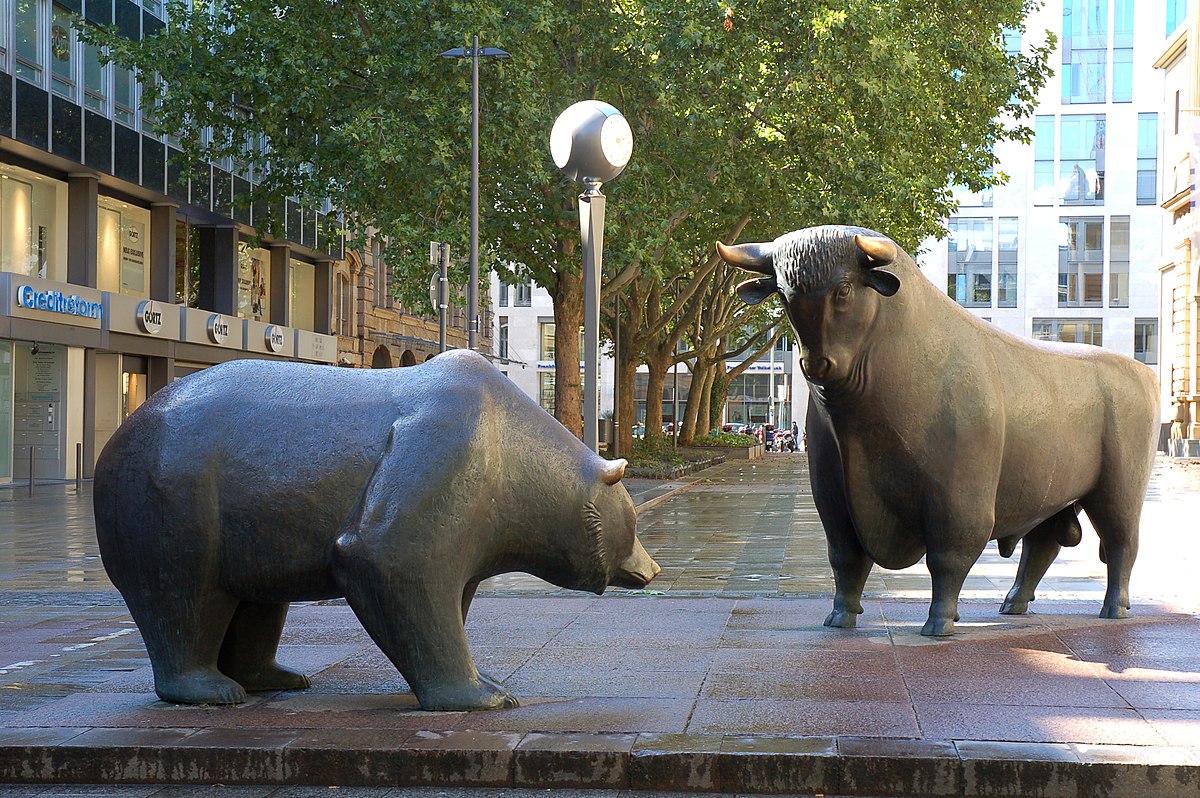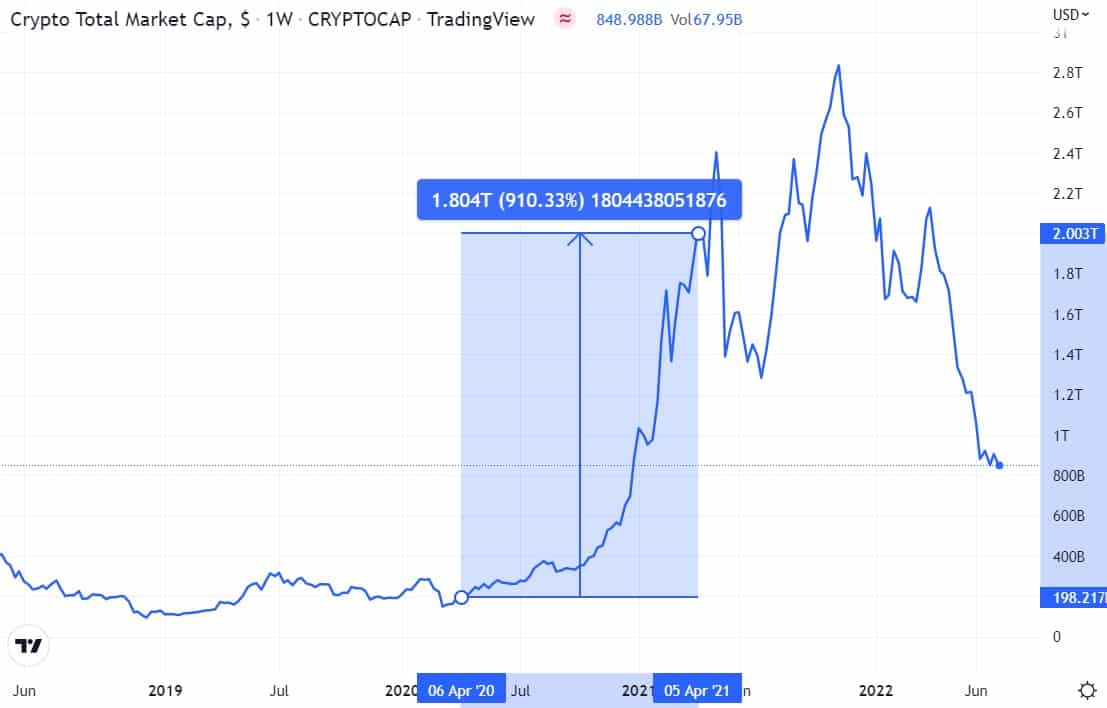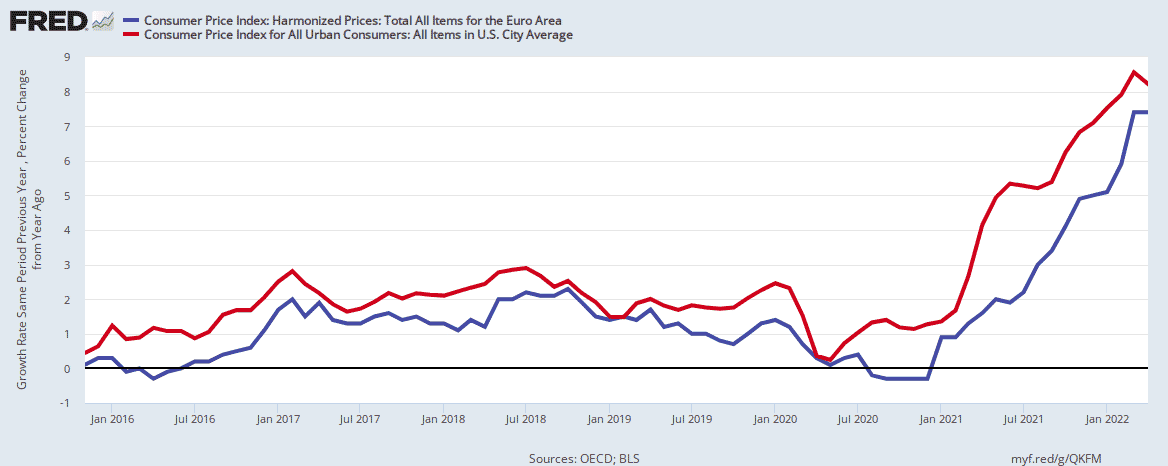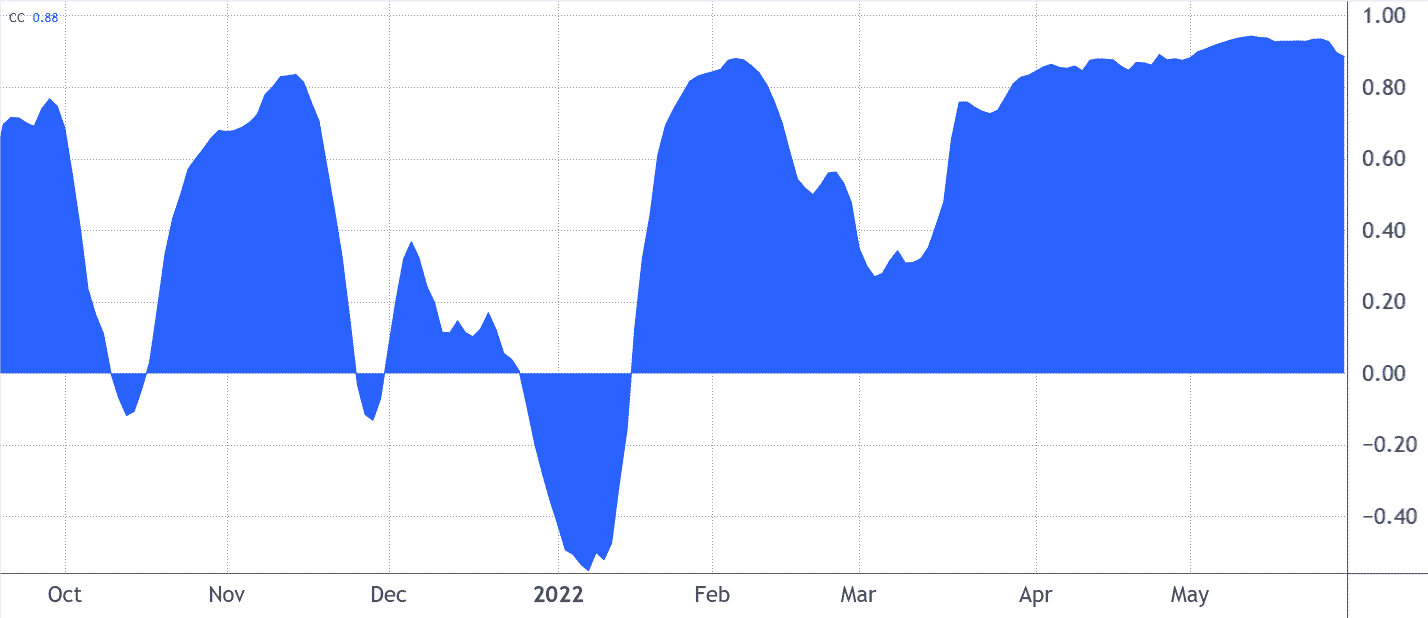Crypto Bear Market 2022: How did we get here?
To survive the bear market, we must make sense of it, so that we can best prepare ourselves for the future.


The 2022 crypto bear market is not an easy topic to write about. As an investor in crypto assets, I can relate to many investors’ feelings of fear, doubt, and even hopelessness.
I’ve experienced it all — I have cut some losses on my investments, but I’ve also held on to unrealised losses. I have traded crypto spot and derivatives with some success, but have also lost hundreds of dollars in a matter of days due to a series of bad judgments.
I have learned many lessons first-hand and from watching the market cycle over the past year. These lessons inspired me to write this series — The 2022 Crypto Winter Journals.
It’s a series of articles on the current crypto bear market (also known as the “crypto winter”) to help you make sense of it all, and to distil valuable lessons from this pivotal moment in crypto history.
What is a bear market?
A bear market is a financial market term for when prices of liquid assets are generally in a prolonged downward trend. This is different from what investors call a price correction, when a price makes a temporary downward turn before continuing its upward trajectory.
How long a bear market lasts is entirely uncertain, and depends on so many external factors. Many of the factors are beyond the fundamental traits of the asset or the crypto project.
For this reason, for any investment, what are in our control are three things:
- how we balance our investment portfolio,
- how we react when prices are surging upwards and downwards,
- and how long we are invested in a particular asset for.

Understanding the crypto bear market of 2022
During the crypto bear market of 2022, many have incurred losses. Some of those are the newbies who experimented with putting a few hundred dollars into various assets.
Others are the multi-million dollar fund managers who now have to contend with angry clients and lenders.
At this point I’m repeating myself, but writing about this isn’t easy, as this topic is very sensitive to some people. However, it’s important not to shy away from this topic. We can learn many valuable lessons from this moment in time.
My goal is not to instil fear, uncertainty, and doubt upon readers. Rather, my goal as a writer in this industry is to be transparent, to stay on the ethical side of the business by providing you with crucial facts not to be missed as an investor.
So, how did we get here?
One thing to note is that, just like other financial markets, the crypto market follows a cyclical pattern. This pattern is triggered primarily by macroeconomic factors. As it’s a cycle, there is technically no beginning.
However, it’s useful to start at the end of 2019, back when the crypto market was about to explode.
March 2020 — COVID-19 Pandemic
At this point you’d think, “Well, this was the start of the COVID-19 pandemic. Is the virus the reason why the crypto market looks bad right now?”
The COVID-19 pandemic was actually a positive trigger for the crypto market (as well as the stock markets worldwide). Around the world, governments attempted to curb the financial shocks that many people were experiencing, resulting from the restrictive health protocols.
Some of the actions that governments took were stimulating the economy through various means. This resulted in money pouring into the financial market, including the crypto market.
Stock prices rose at an incredible pace in 2020. For the crypto market, with a humble market capitalisation of less than 200 billion US dollars, the ride had just begun. As more and more people flocked to the crypto space, within a year the crypto market grew tenfold to 2 trillion US dollars.

Institutional adoption of cryptocurrencies accelerated the growth of the crypto market. You may recall Tesla and MicroStrategy buying bitcoin in 2021.
I’m not talking about them. I’m talking about hedge funds (investment managers with a huge capital and accredited clients) venturing daringly into the crypto market.
Most notable are Grayscale, Three Arrows Capital, and Celsius, who used cryptocurrency and crypto derivatives as investment products to offer to thousands of investors.
(There are certainly many more names, but just remember these three very important names for now.)
November 2021 — Looming fears of high inflation
Along the year 2021, the crypto market experienced many threats and opportunities from regulatory bodies around the world. The crackdown on crypto miners in China, forcing miners to settle overseas (most of them have gone to the United States) caused a price shock on bitcoin at one time.
However, that was not as significant as when the US Federal Reserve announced that the central bank planned to “accelerate tapering of monthly bond purchases“. In layman’s terms, the US central bank is slowing down the US economy faster than anticipated.

The decision was based on a fear that, when left unchecked, the strategy to stimulate the economy may backfire and create high levels of US dollar inflation.
Of course, many economies outside of the US weren’t particularly happy about it, as they could be affected. Here is a simple explanation:
The Federal Reserve is also, in some way, the world’s cash reserve. Countries outside of the US could borrow from US banks, and during the pandemic, interest rates were low enough to encourage borrowing and spending.
With a small increase in the Federal Reserve’s interest rate, other central banks will have to increase their interest rate as well, which then impacts borrowers in their respective jurisdictions. In practice, this urges borrowers to return borrowed money.
Now that there’s less extra money in circulation, large investors developed a lower appetite for risk. This translated to lower purchases of risky assets (like crypto) and even sell-offs.
Here’s also a quick 3-minute video explainer to really drive home that idea.
By the end of the 2021, crypto prices continued to fall, as crypto investors shed off some risk (or cutting their losses) for fear of a further price decrease. It was a snowball effect.
April 2022 — The “tech bubble” is bursting
By this time around, some large companies, particularly in the tech sector, had become overvalued as investors had thought that the economy would keep going the way it has been since 2020. That is, the one driven by stimulus money and overconfident investors.
While the US government has allowed a period of rapid growth in these companies, both in and outside of the United States, there is only so much money investors could put into them. Ultimately, the growth of these companies became unsustainable, causing some companies to undergo mass layoffs.
Meanwhile, the crypto world mirrored the tech sector more closely than ever, not simply because crypto is innovative technology. Rather, it is because the crypto sector is increasingly populated by tech investors.
The graph below shows the price movement correlation between bitcoin and the S&P 500 index (with 1.00 being extremely correlated, while negative being inversely correlated).

Many crypto investors, both large and small, are notorious at speculating that prices will go up consistently, and that the rate of new adopters entering the market will remain constant.
Some crypto investors have even taken on loans to leverage their potential profits, should crypto prices continue to go up.
May 2022 — The collapse of the Terra (LUNA) ecosystem
On 30 April 2022, Terra (LUNA) tokens were valued at US $78 per unit. In a span of just one month, after an alleged “financial attack”, it has lost 99.99% of its value at worst.
The collapse of the Terra ecosystem became a trigger for crises in some other ecosystems and businesses. For example, the collapse led Three Arrows Capital and Voyager Capital to file for bankruptcy.
Certainly, the collapse of Terra also caused panic among crypto investors. This drove the bitcoin price further down in a major sell-off event.
How LUNA got here is a long story. There were many factors, many parties affected, and many moving parts. We’ll cover the full LUNA story in the next part of this series.

What can we learn from this crypto bear market?
A common theme that you may hear that surrounds the narrative of the market cycle is that of greed. It sounds simple enough: “The greedier you are, the harder you fall”.
But that only leads to more confusion. First of all, what does being “greedy” even mean in this context? We could say it’s the excessive buying of assets without proper risk management strategies.
Yet, sometimes we often don’t know what is considered excessive. We may not know anything about risk management.
So, telling ourselves not to be greedy is rather pointless, if we don’t know how much we’re comfortable losing. For each person, that number will be different. Perhaps the lesson here is to know yourself and your own limits? Possibly.

But greedy investors have another common trait:
They think that they are invincible to price volatility.
They think that they can make big bets on a few rising stars, without diversifying on relatively less volatile assets.
They even borrow money to make those big bets into gigantic bets (an action known as leveraging).
It’s common to blame retail traders for “pumping up” crypto prices to unsustainable levels, by excessive use of leverage. In reality, the irresponsible actions of a few institutional traders — those with deep pockets and often bottomless appetite for risk — could have a major impact on the crypto market as a whole.
In the next parts of the series, we’ll be taking a look at how the LUNA ecosystem collapsed, and how institutions like Three Arrows Capital, Celsius, and some other major names in crypto suffered a liquidity crisis, much to the expense of creditors and retail users.
Keep in mind that in any market condition, it’s recommended to do your own research before making any investment decision. The purpose of this series is strictly to facilitate education and provide you context with what’s happening in the current bear market.
Stay tuned.
Share to
Stay curious and informed
Your info will be handled according to our Privacy Policy.
Make sure to follow our Twitter, Instagram, and YouTube channel to stay up-to-date with Easy Crypto!
Also, don’t forget to subscribe to our monthly newsletter to have the latest crypto insights, news, and updates delivered to our inbox.
Disclaimer: Information is current as at the date of publication. This is general information only and is not intended to be advice. Crypto is volatile, carries risk and the value can go up and down. Past performance is not an indicator of future returns. Please do your own research.
Last updated October 18, 2022





